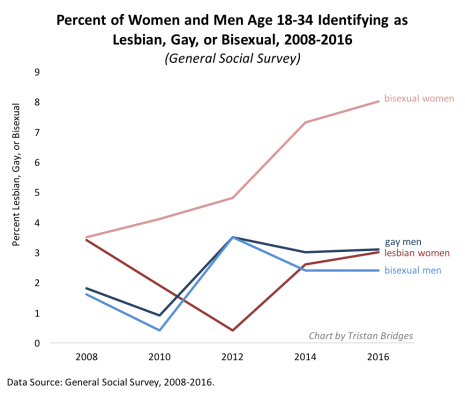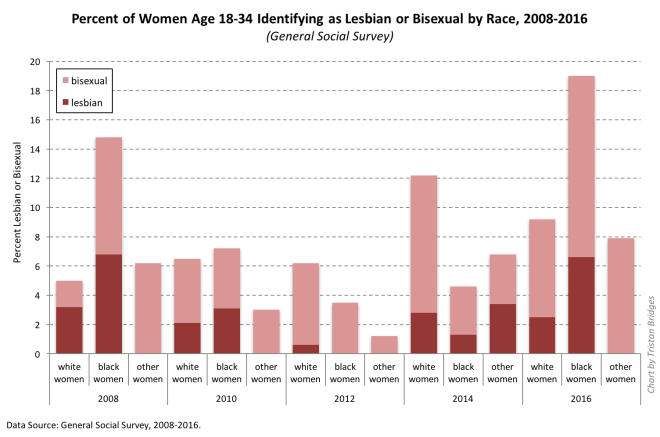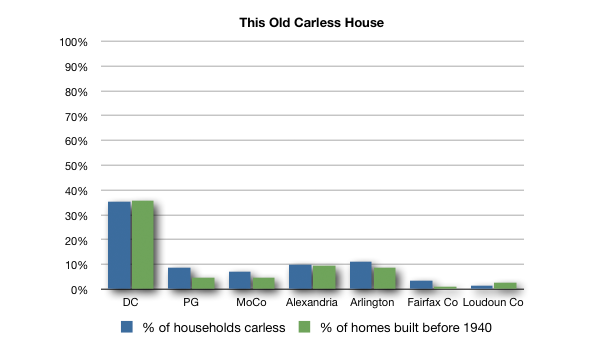Based on analyses of General Social Survey data, a well-designed and respected source of data about American life, members of the Millennial generation are acquiring about the same number of sexual partners as the Baby Boomers. This data suggests that the big generational leap was between the Boomers and the generation before them, not the Boomers and everyone that came after. And rising behavioral permissiveness definitely didn’t start with the Millennials. Sexually speaking, Millennials look a lot like their parents at the same age and are perhaps even less sexually active then Generation X.
Is it true?
It doesn’t seem like it should be true. In terms of attitudes, American society is much more sexually permissive than it was for Boomers, and Millennials are especially more permissive. Boomers had to personally take America through the sexual revolution at a time when sexual permissiveness was still radical, while Generation X had to contend with a previously unknown fatal sexually transmitted pandemic. In comparison, the Millennials have it so easy. Why aren’t they having sex with more people?
A new study using data from the National Survey of Family Growth (NSFG) (hat tip Paula England) contrasts with previous studies and reports an increase. It finds that nine out of ten Millennial women had non-marital sex by the time they were 25 years old, compared to eight out of ten Baby Boomers. And, among those, Millennials reported two additional total sexual partners (6.5 vs. 4.6).

Are Millennials acquiring more sexual partners after all?
I’m not sure. The NSFG report used “early” Millennials (only ones born between 1981 and 1990). In a not-yet-released book, the psychologist Jean Twenge uses another survey — the Youth Risk Behavior Surveillance System — to argue that the next generation (born between 1995 and 2002), which she calls the “iGen,” are even less likely to be sexually active than Millennial. According to her analysis, 37% of 9th graders in 1995 (born in 1981, arguably the first Millennial year) had lost their virginity, compared to 34% in 2005, and 24% in 2015.
Percentage of high school students who have ever had sex, by grade. Youth Risk Behavior Surveillance System, 1991-2015.

If Twenge is right, then we’re seeing a decline in the rate of sexual initiation and possibly partner acquisition that starts somewhere near the transition between Gen X and Millennial, proceeds apace throughout the Millennial years, and is continuing — Twenge argues accelerating — among the iGens. So, if the new NSFG report finds an increase in sexual partners between the Millennials and the Boomers, it might be because they sampled on “early” Millennials, those closer to Gen Xers, on the top side of the decline.
Honestly, I don’t know. It’s interesting though. And it’s curious why the big changes in sexually permissive attitudes haven’t translated into equally sexually permissive behaviors. Or, have actually accompanied a decrease in sexual behavior. It depends a lot on how you chop up the data, too. Generations, after all, all artificial categories. And variables like “nonmarital sex by age 25” are specific and may get us different findings than other measures. Sociological questions have lots of moving parts and it looks as if we’re still figuring this one out.
Lisa Wade, PhD is an Associate Professor at Tulane University. She is the author of American Hookup, a book about college sexual culture; a textbook about gender; and a forthcoming introductory text: Terrible Magnificent Sociology. You can follow her on Twitter and Instagram.










